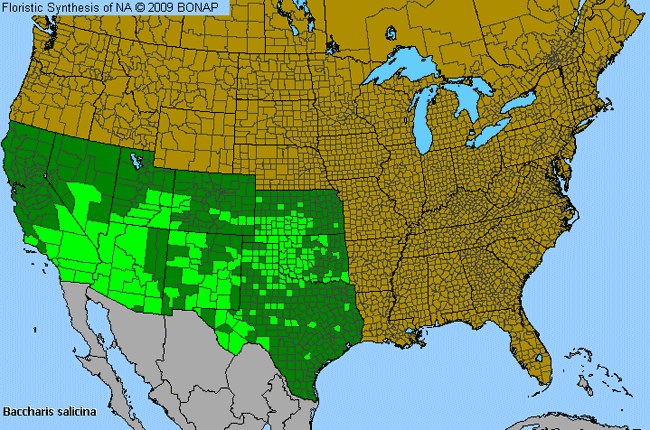Great Plains False Willow (Baccharis salicina)

Great Plains False Willow Species Description

This species is native to North America north of Mexico.
Allergenicity: Great Plains False Willow (Baccharis salicina) is a severe allergen.
Pollination: Occurs in following seasons depending on latitude and elevation: Summer to Fall.
Angiosperm - Flowering Dicot: Plants in this group have two embryonic leaves (dicotyledons). Examples of dicotyledons are beans, buttercups, oaks, sunflowers, etc.
Shrub: A woody plant smaller than a tree, and usually with several stems from the same root.
Weed: Any plant growing in cultivated ground to the injury of the crop or desired vegetation, or to the disfigurement of the place; an unsightly, useless, or injurious plant.
Perennial: Living for many years.
Wetland Plant: Plants growing in aquatic or wetland habitats. These include all known floating, submerged, and emergent taxa, plus those that are found in permanently or seasonally wet habitats.
Woody Stem: Non-herbaceous. Lignified.
Evergreen: Retaining leaves throughout the year including changing seasons.
Great Plains False Willow Species Usage

Butterfly Plant: A plant that is known to attract butterflies.
Related Links

More Great Plains False Willow (Baccharis salicina) imagesby Jessie M. Harris from BONAP










